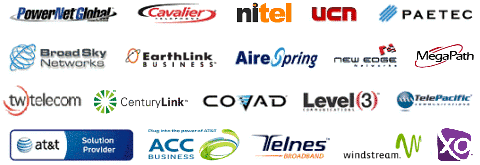Facts About Asynchronous Transfer Mode
Asynchronous transfer mode or ATM typically is a cell based switching technique that has produced an evolution in the telecommunication systems of today and are related to networking. This involves a great deal of superb capabilities that can operate on both LAN and WAN links for businesses in Canfield.
Nearly all IT professionals are familiar with the word ATM, but how many really know everything about its functionality or how it runs? We hardly actually understand exactly what this abbreviation stands for. Well ATM particularly is short for asynchronous transfer mode and is often defined as a traditional cell based switching approach that expressly uses asynchronous time division multiplexing which enables transforming specific data into specific sized cells or cell relay and gives specific data link layer services that especially operate on OSI Layer 1 physical links. Most often people mistake it with packet switched networks like the Internet Protocol or Ethernet where different sized small-scale packets are used for data transfer.
Asynchronous transfer mode or ATM generally offers benefits of two forms of networking. This indicates that it can be employed in both circuit switched as well as packet switched networking. This permits it to operate as the best means of a wide variety of data transfer. It is additionally very appropriate for high throughput media transport. The model which is mainly utilized in this particular mode of data transfer is primarily connection focused, therefore readily linking both end points with virtual circuit prior to the data beginning to transfer.
Asynchronous transfer mode technology will readily be employed for both LAN and WAN links. ATM additionally has several other distinctive features that are discussed briefly as follows:
It effortlessly delivers high transmission rates for both LAN and WAN connections by simply enabling distributed programs of substantial capability that formerly could only be utilized in a LAN network but was unsuccessful on WAN systems.
ATM uses the basic strategies to switch between single integrated switching methods. As a result, it is particularly appropriate for the distributed programs which usually produce constant bit rate or CBR data streams. This is also ideal for variable bit rate or VBR.
Asynchronous transfer mode is a fairly modern concept in the field of communication technology, and it is evolving daily to provide brand new means to enhance modern day networking in Canfield.
We help you with Ohio T1 line. This page is a short listing of the services specifically offered by T1Market in Canfield.
As we go forward, our goal is to continually improve our product offerings. We now supply business products usually utilized by bigger corporations, namely: gigabit ethernet, MPLS network service, OC3, and cloud computing bandwidth delivered over a fiber optic backbone. Many of our carriers also provide cost-free managed Cisco routers for multi-year contracts. Primarily, our goal is to create a bond with you - our customer - that will definitely last for years to come. Earning your trust is what we do all the time. Saving you cash on low-cost Ethernet services is how we keep it.


